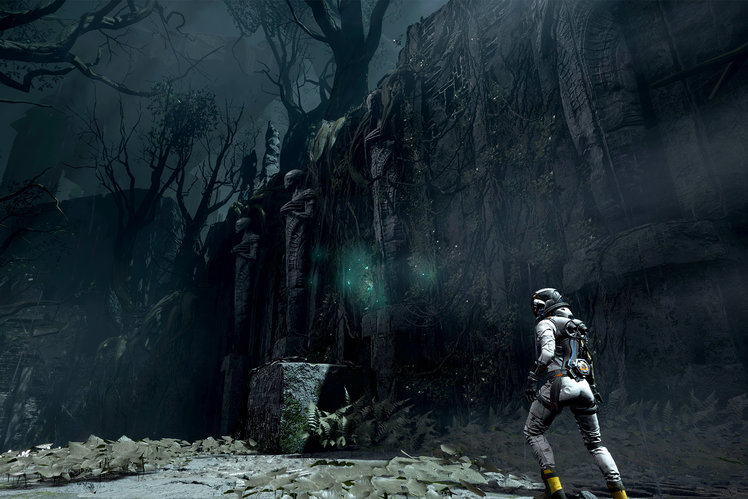
As the world continues to be gripped by a pandemic not seen in generations, it comes as no shock that gaming has been affected like just about everything else. Games release schedules have been adversely hit in particular, with fewer releases, especially of a triple-A standard.
Thank the heavens for Returnal, then. Not previously considered in top tier terms, the PlayStation 5 exclusive has however earned its stripes and could be one of the few titles to conversely benefit from global woes, with a greater number of eyes on it now than perhaps in more normal times.
It’s obvious why it could have been previously overlooked and underappreciated. Developer Housemarque is hardly known for its action-adventure titles, for starters, having largely made its name with indie retro-inspired shooters. Early trailers and marketing fanfare were uninspiring too, making it seem more like an Alien-esque shoot-’em-up than the deeply layered, third-person shooter-platformer-survival-horror roguelike it has turned out to be.
Back once again
That’s not to say it isn’t heavily inspired by Alien and the works of HR Giger – the art style seems so influenced, you could swear it had been directed by Ridley Scott. But originality seeps from every pore, and it is as far removed from other Sony exclusive in recent memory.
Take the plot, for example. It is far more involving than “travel to a planet, shoot everything and leave”. It is structured, subtle (at least initially), and is eminently playable. That’s to say, it intertwines with the gameplay. There are few cut scenes and, indeed, little preamble. Instead, you discover the story as you play, whereby you feel like you are driving it rather than the other way around.
All you know at the beginning is that you are a pilot, Selene, who has crash landed on an alien planet. The planet, Atropos, turns out to be aptly named after the Greek goddess in charge of every mortal’s thread of life, and that sets up a cycle of life and death that runs throughout.
Atropos is ever changing, largely deadly, and often mysterious. It is also, for a reason that may become clearer as you progress, locked in some form of time loop – each time you die, you reappear at the crash site and must start your progress almost afresh.
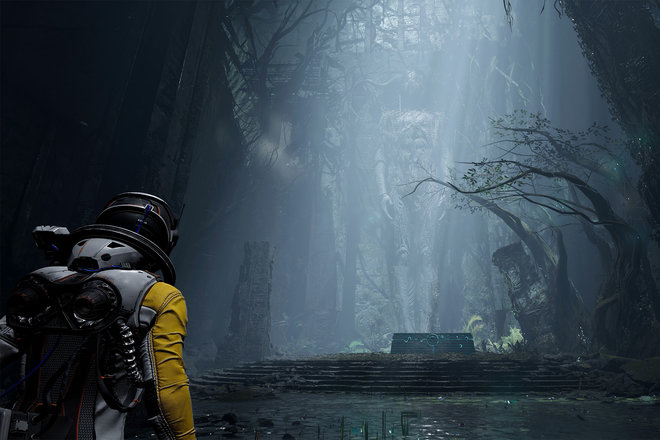
Now, this might sound like it could get repetitive or frustrating, but Housemarque beautifully balances the concept with clever gameplay decisions. First up, Returnal is a roguelike in order to keep things fresh each time you die and restart. There are six biomes to explore throughout the game, each with increasingly harder-to-tackle enemies. Each biome is also made up of differently sized rooms that shift around to present a different maze each life cycle.
The second example of ingenuity by the developer is that some power-ups and abilities remain with you once found the first time, making it easier to progress each time. Enhanced weapons you come across will disappear – leaving you with the same starter pistol – but you will be guided to a pick-up point earlier in your subsequent progress, in order to re-equip you for the perils you already know lie ahead.
In addition, the game tends to bring forward more advanced rooms to get you closer to your goal more quickly. This allows you to avoid having to tread the same areas over-and-over again – and helps stave off frustration as you essentially want to just get back to the part where you died before.
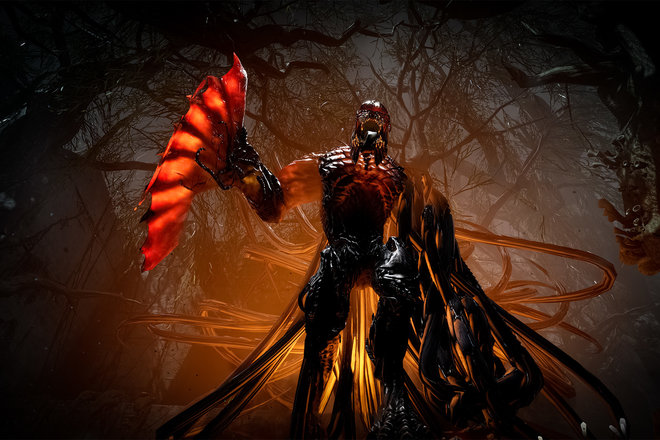
This is vital, really, as Returnal is one of the hardest games around right now. Up there with the toughest Souls games for sure (pay attention Demon’s Souls fans).
Ah, shoot
For its cunning complexity and mysterious, unravelling plot, Returnal is surprisingly simple to just pick up and play.
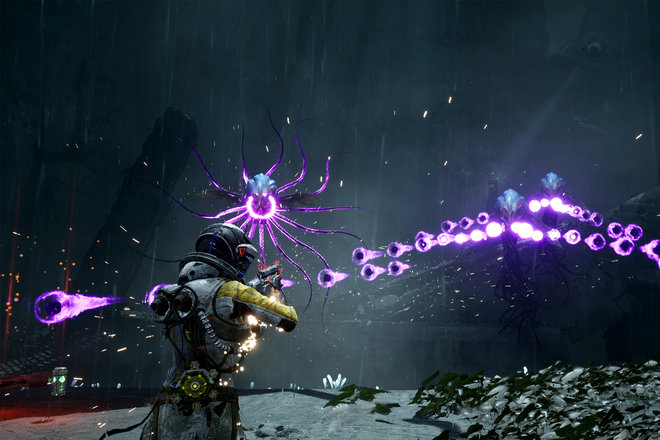
It’s a third-person shooter at its heart, with enemy battles largely taking place over a distance as you blast away with whatever gun you have chosen to carry (you can only use one at a time). Each gun has a primary and secondary firing modes, with the latter particularly damaging but needing a cooldown after each shot.
This offers the first instance of the game’s cunning use of the PS5’s DualSense controller. To fire the primary shot – which is endless but can overheat – you just need to either pull the right trigger or slightly press the left trigger too for aiming. Pressing harder on the left trigger will activate the alternative firing mode. Haptic feedback is also used throughout the game, with every tiny droplet of rain or other special effect offering minute rumbles that ripple around the pad. This is what Sony clearly expected when it first announced the DualSense’s unique properties. It is immersion on another level, that’s for sure.
Rooms in Returnal can be empty – save for an item chest or object to interact with – or they can be filled with horrors. Alien creatures on Atropos seemingly only want to send you to oblivion, and that’s where the fun starts. If you have the weaponry and skillset, you can have some glorious battles, even with the most basic of baddies. The studio’s undoubted experience with top-down shooters comes to the fore, with shooting patterns and styles seeming more in tune with 2D shoot-’em-ups. It makes for a decent challenge each time.
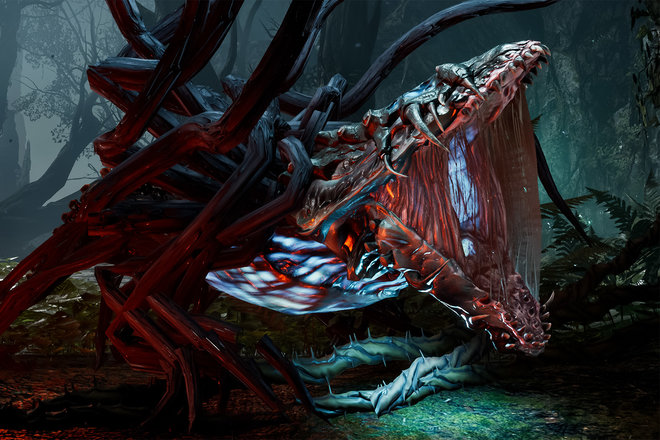
More challenging still are the end-of-biome bosses, who each take so much punishment before yielding. Whereas, you can take only a little before you die and have to repeat the process again. Still, the power-ups found along the way each time can help, while early battles prepare you well for later, much harder foes.
Pretty deadly
We’ve touched upon the interesting uses of the DualSense controller, but they aren’t the only examples of why this is a next-gen title only. Returnal uses just about every trick in the book, visually, including ray tracing and 60 frames-per-second. You couldn’t have a fast-paced shooter without the latter, to be fair.
It is also stunning looking. Yes, it invokes the spirit of Scott’s original Alien and, even more so, Prometheus, but there are neon flourishes throughout that make scenery and enemies pop. When played on a decent HDR TV, it is a true feast for your eyes.
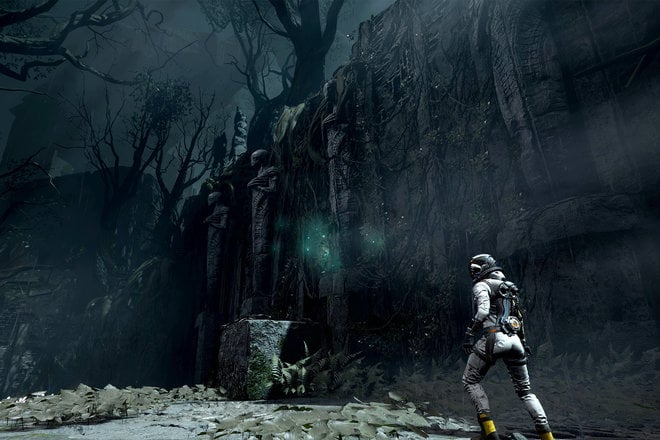
Our first couple of runs were mainly spent looking around, to be honest. Not just for clues or ways to navigate the maze, but to soak in the majesty. The game runs in dynamic 4K, which must dip at times in order to maintain high frame rates, but we didn’t really notice.
There are some grainier sections and some less detailed textures – such as the house (you’ll know what we mean when you see it) – but nothing too overt and certainly nothing to spoil the enjoyment.
